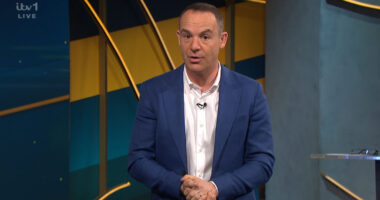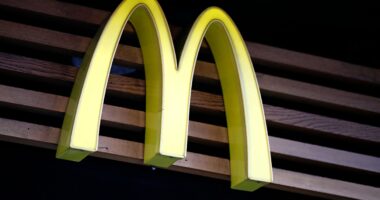
What will we learn on Wednesday? The Budget last year was an emergency response to an emergency. Any long-term strategic plans for the economy were pushed aside by the overwhelming need to try to keep people in jobs, stop companies from going under, and funding the surging needs of the healthcare system.
There were fine words about levelling up the country and greening the economy. In practice, the past year has been a desperate struggle to keep the show on the road.
We are not yet through this by any means, and there will be further support measures set out. But we can glimpse more normal times in the second half of the year, and we will start to see what the Government really wants to do. So what’s to look for?


Economic boost?: Inflation could be Chancellor Rishi Sunak’s friend
In normal times, you start with the forecasts from the Office for Budget Responsibility and then look at how the Chancellor responds to them. But that approach makes no sense now, for the uncertainties are so huge that forecasts are pretty meaningless.
I will be interested in seeing the projected budget deficit for the current financial year, and anything under £350billion will be a relief. But what matters for the next financial year, the one that starts in April, will be how quickly economic activity recovers.
The brakes should be off the economy by June and the Bank of England calculates that by then UK consumers will have a cash pile of £250billion to spend. That is huge: even if we spent, say, only £50billion of it, that would fuel an enormous boom in the second half of the year.
The extraordinary thing is that none of us has any idea what people will do. There is nothing in the past to guide us, only our common sense about how people behave when they have been locked down and then get their freedom back.
My guess is that there will be a massive surge in demand and, as a result, a surge in inflation. I can’t see us getting back this year to the level the economy was at the end of 2019. There is simply too much ground to recover. But I could see us being there by the middle of 2022. Let’s see what Rishi Sunak says about that on Wednesday.
Let’s see too what he does about taxes. It would be mad to do anything substantial on the tax-raising side until there is solid, sustainable growth, and he won’t. But the emergency cuts in taxation cannot go on forever.
What the Chancellor really needs to get the nation’s finances back under control are not tweaks to taxes but a little inflation. That both increases cash revenues and cuts the real value of the national debt. It is his get out of jail card. I think that will start coming through in the autumn.
There is one further thing. Is this Government for real both about rebalancing the economy and about the shift to a low-carbon future? If so, it needs all the help it can get. One intriguing idea is to mobilise more pension fund savings to pay for the investment in infrastructure these policies need. There is money hunting better investment opportunities. It needs to be free to chase them.
This comes back to the key question: how can this Government lift the UK economy over the long haul?
There is no magic wand that Sunak can wave. But as the pandemic mercifully recedes, we can ask of him to clear the roadblocks to growth that have existed for far too long.
The country is too uneven. The best enterprises are magnificent, but there is too long a tail of underperformers. Some of that underperformance is a function of all the problems we know about: weak management, poor training and so on. But some is the fault of Government. Let’s see what the Chancellor has to say about that.
……………………………………………………………………………………………………………………..
American bond yields may not be a subject of dinner table conversation in the UK, but they matter enormously. Actually, the rate on ten-year US treasuries is the most important interest rate in the world, for it affects the price of money everywhere.
It went through 1.5 per cent last week. The equivalent UK gilts on Friday were yielding more than 0.8 per cent, which may not sound much until you look at the beginning of January, when they were below 0.2 per cent.
I see this as normality returning: the beginning of the end of ultracheap money. It will be a long march back to sanity, but it is a relief to have begun it.









